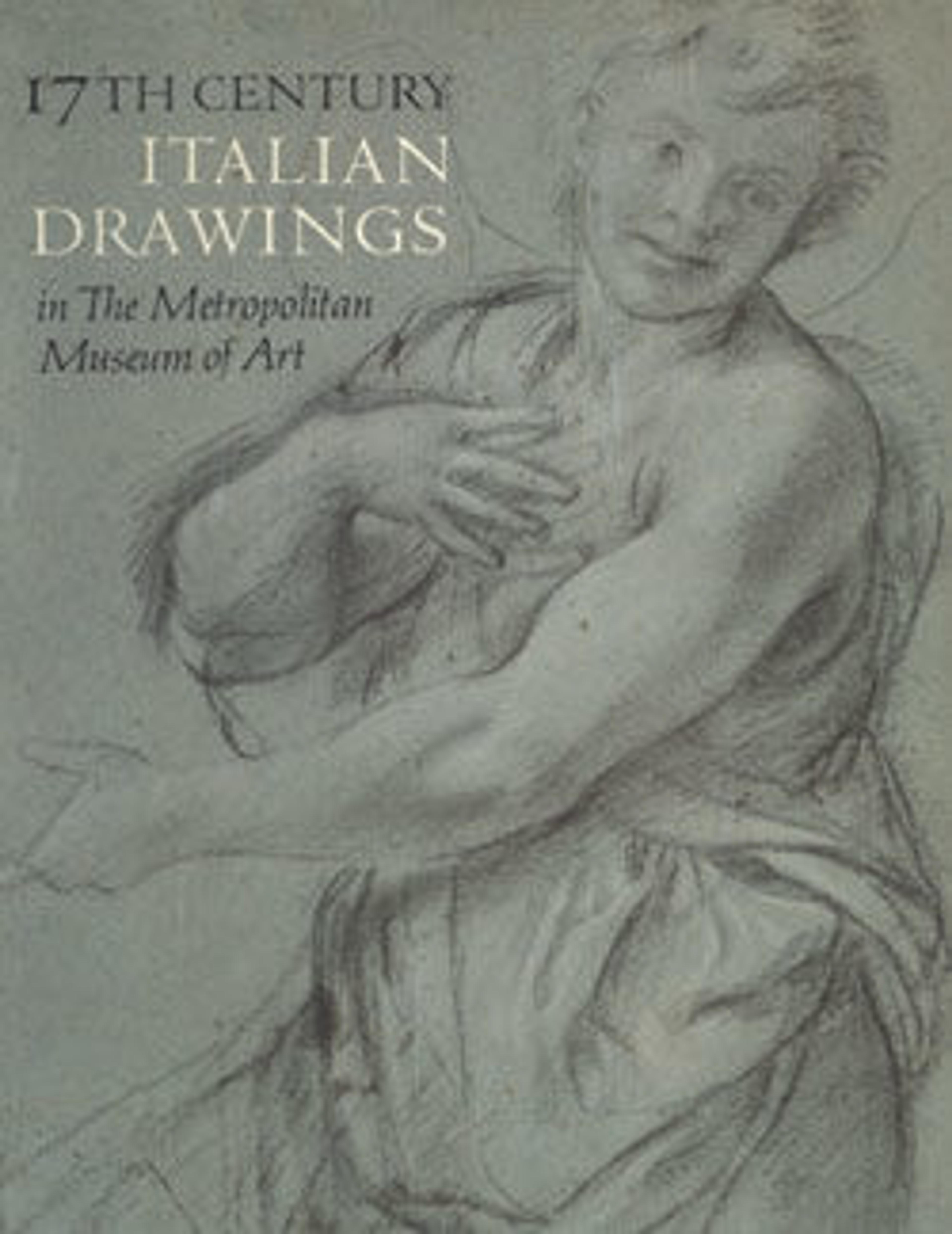Allegory of the Old and New Dispensations
A late work by the prolific Maratti, this drawing depicts a complex theological allegory. Gathered around an altar on which rests a chalice containing the Eucharistic wine are the four Evangelists, authors of the Gospels and representatives of the New Dispensation. In the background at the right is the king-priest Melchizedek making an offering while gazing upward at an angel holding a tablet that represents either the Pentateuch (the Hebrew Bible, or Five Books of Moses), or possibly the Tablets of the Law. This subsidiary tableau is a portrayal of the Old Law or Old Dispensation that, according to Catholic theology, was superseded with the advent of Christianity.
Maratti produced this drawing as the design for the frontispiece of an elaborate missal published in 1714. One of the artist's biographers reports that the aged artist in his last years suffered from a palsy that restricted his activity to the production of drawings and sketches, many produced as designs for engravings. This complex and beautiful design confirms such written biographical testimony.
Peter Dreyer identified this late drawing by Maratti as that reproduced in reverse by Giovanni Girolamo Frezza in an engraving dated 1708 (Dreyer 1969). A dry replica of the present drawing is in the Royal Library, Windsor Castle. Although Dreyer published the Windsor drawing as an original by Maratti, Anthony Blunt suggested that it is an old copy after the Metropolitan Museum's sheet (Blunt 1971). (For full bibliography see here "References")
Maratti produced this drawing as the design for the frontispiece of an elaborate missal published in 1714. One of the artist's biographers reports that the aged artist in his last years suffered from a palsy that restricted his activity to the production of drawings and sketches, many produced as designs for engravings. This complex and beautiful design confirms such written biographical testimony.
Peter Dreyer identified this late drawing by Maratti as that reproduced in reverse by Giovanni Girolamo Frezza in an engraving dated 1708 (Dreyer 1969). A dry replica of the present drawing is in the Royal Library, Windsor Castle. Although Dreyer published the Windsor drawing as an original by Maratti, Anthony Blunt suggested that it is an old copy after the Metropolitan Museum's sheet (Blunt 1971). (For full bibliography see here "References")
Artwork Details
- Title:Allegory of the Old and New Dispensations
- Artist:Carlo Maratti (Italian, Camerano 1625–1713 Rome)
- Date:1700–8
- Medium:Pen and brown ink, over black and red chalk, highlighted with white gouache, on light brown paper
- Dimensions:11 7/8 x 8 5/16in. (30.2 x 21.1cm)
- Classification:Drawings
- Credit Line:Rogers Fund, 1967
- Object Number:67.95.10
- Curatorial Department: Drawings and Prints
More Artwork
Research Resources
The Met provides unparalleled resources for research and welcomes an international community of students and scholars. The Met's Open Access API is where creators and researchers can connect to the The Met collection. Open Access data and public domain images are available for unrestricted commercial and noncommercial use without permission or fee.
To request images under copyright and other restrictions, please use this Image Request form.
Feedback
We continue to research and examine historical and cultural context for objects in The Met collection. If you have comments or questions about this object record, please contact us using the form below. The Museum looks forward to receiving your comments.
